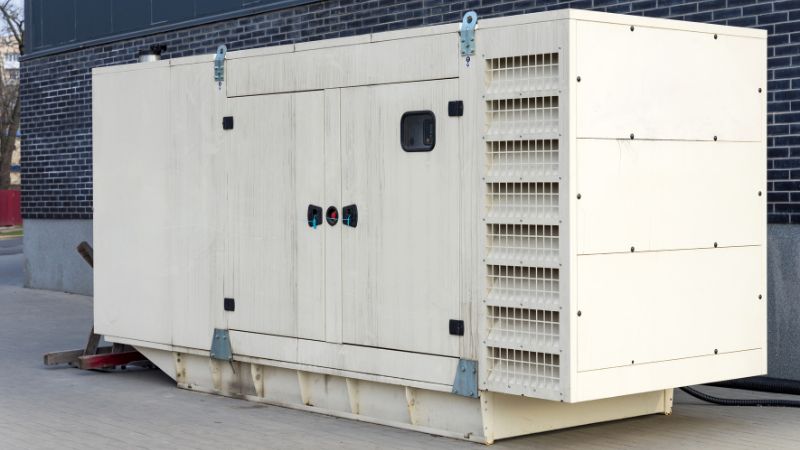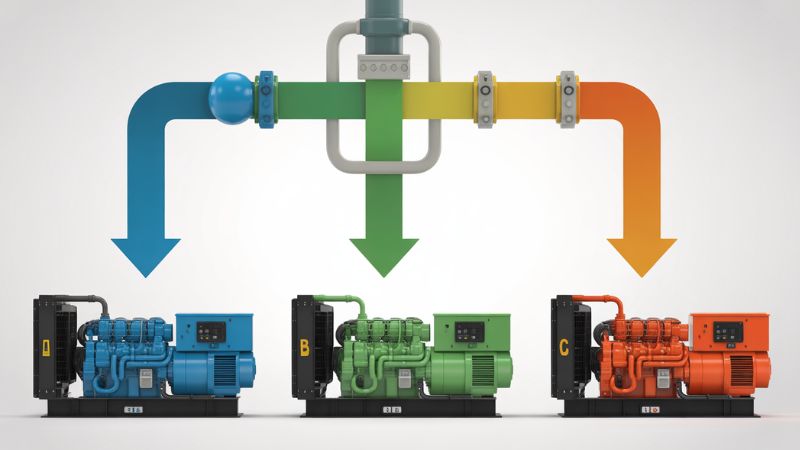
We live in a world that is highly dependent on electricity, one where businesses and critical facilities cannot afford downtime. When a single generator isn’t enough to guarantee an uninterrupted backup power supply, generator paralleling and load sharing provide the solution. This advanced approach combines multiple generators into a synchronized system that offers superior reliability, scalability, and efficiency. This guide explains the fundamentals of how these systems work and why they’re essential for modern power management.
What Is Generator Paralleling?
Generator paralleling is the process of synchronizing and connecting two or more generator sets to work together as a single power source. Imagine several horses pulling a carriage together rather than separately—paralleling combines the strength of multiple generators to handle loads that would overwhelm a single unit.
The paralleling process requires precise synchronization of three key electrical parameters:
- Voltage: The output voltage of all generators must match
- Frequency: The electrical frequency must be identical across all units
- Phase angle: The waveform timing must be perfectly aligned
This synchronization is typically managed by an automated control system that monitors these parameters and connects the generators when conditions are perfect, preventing dangerous power surges or equipment damage.
What Is Generator Load Sharing?

While paralleling handles the connection process, load sharing manages the ongoing operation. Load sharing is the automated system that ensures all paralleled generators contribute their fair share of the total electrical load proportionally.
The control system continuously monitors power output from each generator and makes fine adjustments to maintain balance. This prevents situations where one generator works at maximum capacity while others sit idle, ensuring optimal performance across the entire system.
How Does Load Sharing Work?
Load sharing operates through a sophisticated control system that functions as the “brain” of the operation. Here’s how it works in practice:
- Continuous Monitoring: Sensors track real-time power output from each generator
- Load Calculation: The system calculates total power demand from connected equipment
- Automatic Adjustment: Controllers signal each generator’s governor to increase or decrease fuel supply as needed
- Balance Maintenance: The system makes constant micro-adjustments to keep loads evenly distributed
Advanced systems use isochronous load sharing, which maintains not only balanced power distribution but also consistent frequency regardless of load changes. This ensures premium power quality for sensitive equipment.
Key Benefits of Load Sharing
Enhanced Reliability
Paralleled systems provide built-in redundancy through the N+1 principle. If one generator fails or requires maintenance, the remaining units automatically pick up the load without interruption. This eliminates single points of failure that plague single-generator installations.
Scalability and Flexibility
Load sharing systems can grow with your power needs. Adding capacity is as simple as integrating another generator into the existing system. This flexibility makes paralleled systems ideal for facilities with seasonal load variations or planned expansion.
Improved Efficiency
Generators operate most efficiently at 70-80% of their capacity. Load sharing ensures multiple generators run at their optimal load level rather than running one generator inefficiently at light loads or overloading it during peak demand. This balanced operation reduces fuel consumption and minimizes engine wear.
Stability
Multiple generators working together provide more stable power than a single large unit. The combined system can handle large load changes smoothly, maintaining consistent voltage and frequency for sensitive electronic equipment.
Common Applications of Load Sharing
- Data Centers: Require absolute power reliability and the ability to scale as server loads increase
- Healthcare Facilities: Hospitals need redundant power systems for life-critical equipment
- Industrial Manufacturing: Large facilities with variable power demands benefit from scalable solutions
- Water Treatment Plants: Critical infrastructure that cannot tolerate power interruptions
- Large Events and Mining: Temporary or remote operations needing flexible, robust power solutions
Challenges of Load Sharing
While highly beneficial, load sharing systems present some challenges:
- Higher Initial Cost: Advanced control systems and switchgear require greater upfront investment
- Increased Complexity: System design, installation, and maintenance require specialized expertise
- Space Requirements: Multiple generators need more physical space than a single unit
- Maintenance Demands: Synchronized systems require careful maintenance scheduling to ensure all components work together properly
These challenges are typically outweighed by the long-term benefits for applications where power reliability is critical.
Frequently Asked Questions
Can you parallel generators from different manufacturers?
Yes, with proper control systems, but it’s more complex than paralleling identical units. Specialized controllers can synchronize different generators, but matching units from the same manufacturer simplifies integration.
What’s the difference between kW and kVAR in load sharing?
kW (kilowatts) represents real power that performs actual work. kVAR (kilovolt-amperes reactive) represents reactive power that maintains electromagnetic fields in motors and transformers. Load sharing systems balance both types of power for optimal operation.
How does load sharing work during generator failure?
If a generator fails, the control system immediately redistributes its load to the remaining units. If the remaining capacity is sufficient, the transition is seamless with no power interruption.
What maintenance is required for paralleling systems?
Regular maintenance includes testing synchronization controls, verifying load sharing functionality, checking circuit breakers, and maintaining individual generators according to manufacturer specifications.
Conclusion
Generator load sharing and paralleling represent the gold standard in reliable power generation. By transforming multiple generators into a coordinated system, facilities gain unprecedented reliability, efficiency, and scalability. While the technology requires careful planning and expertise, the benefits for data centers, healthcare facilities, industrial operations, and other critical applications make it an essential solution for modern power needs.
As power reliability becomes increasingly crucial across all sectors, understanding and implementing generator paralleling and load sharing systems will continue to be a strategic priority for businesses and organizations worldwide.
